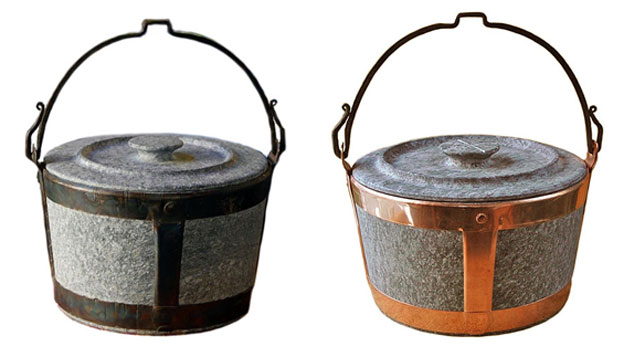IN THE PAST
In the past, pots were not made of metal, but rather of clay or soapstone. The first metal to be used to make pots was bronze, probably followed by iron in medieval times, both worked by casting. Adding handles to clay pots was a simple task, but fixing them to stone, on the contrary, is not so easy. It was only in the Middle Ages that Italian craftsmen from Valtellina and Valchiavenna began to encase the “laveggi” (as they were called) in wrought iron frames. During the Renaissance, copper pots appeared, which continued to be widely used until the 19th century. It was probably from then that craftsmen began to replace iron frames with copper ones, which were easier to work with.


It was only during colonial times that the art of working with soapstone arrived in Brazil, in the region of Vila Rica, then the capital of Minas Gerais. Here, over the centuries, the workshops of master craftsmen and sculptors’ studios multiplied, while stone pots became part of the regional cultural heritage. However, it was only in the last fifty years that craftsmen began to develop methods for attaching handles to the stone. At first, they used a twisted wire around the pot to hold two handles made from small pieces of wood. Nowadays, the most common system is to apply a copper band around the pot, hammered in two grooves, to which two bent pieces of copper tube are riveted as handles.
